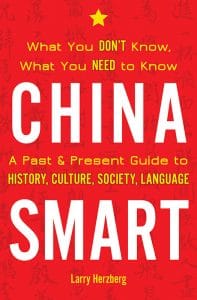Bertil Lintner, in his enlightening new book The Costliest Pearl, describes today’s struggle for supremacy in the Indian Ocean as a new Great Game, or alternatively, a new Cold War. The major contestants are China, the United States and India, but subsidiary powers such as Australia, France, and Japan are also involved.
The Chinese diaspora, and the diasporic experience, is typically covered country-by-country or perhaps region-by-region, the geography usually determined by what is relevant to a particular group of readers. The narratives of the Chinese in, say, California and London are usually treated separately.
Ah, Tibet! This is the land of stupendous mountain vistas, prayer flags flapping in the breeze, monasteries perched precariously on hillsides and gentle orange-clad lamas chanting Buddhist prayers in incense-filled temples. And then, along comes Tsering Döndrup to spoil it all.
Hong Kong is a surprisingly green place: the skyscrapers that form the stunning cityscapes that are the territory’s most common and iconic images hug the coast. Some three-quarters of Hong Kong is in varying degree countryside and 40 percent set aside as parkland.

How is China organized politically? What are the issues that young people face in today’s China? What is China doing about its problem with pollution? Is the Chinese internet like our internet? What’s China’s role in the world today? And how much do you know about China’s great woman emperor or the Chinese explorer whose voyages may have inspired the legend of Sinbad the Sailor? What are the major Chinese holidays, their superstitions regarding numbers, and the true nature of the Chinese written language?
Before I read this wonderfully quirky book of stories, I had never given much thought to such things as trainer bras or lucky dry fruit, both of which feature in two of May-Lee Chai’s stories about Chinese immigrants and their reactions to their experiences in new countries.
Unlike other forms of disaster—such as earthquake, flood or hurricane—famine is a distinctly political occurrence. Most often they are the product of political action that deprives people of food, either through neglect or targeted victimization. Such was the case for the nation-wide famine inflicted upon the Kazakh Soviet Socialist Republic—now the modern-day Central Asian state of Kazakhstan—from 1930-33.

In an age of social media and reality television, reading and consumption habits in India now demand homegrown pulp fictions. Ulka Anjaria categorizes post-2000 Indian literature and popular culture as constituting “the contemporary,” a movement defined by new and experimental forms—where high- and low-brow meet, and genres break down.
Strongly influenced by One Thousand and One Nights, Jamil Jan Kochai’s new novel is a cornucopia of modern and ancient stories set in the war-torn heartlands of Afghanistan.
Japan’s current defense policy is shaped by three principal factors: domestic politics, perceptions of external threats, and its alliance with the United States. In her new book Japan Rearmed, Sheila A Smith, a Japan expert at the Council on Foreign Relations, meticulously explores the evolution of Japan’s military policy from the beginning of the Cold War to the present.

You must be logged in to post a comment.